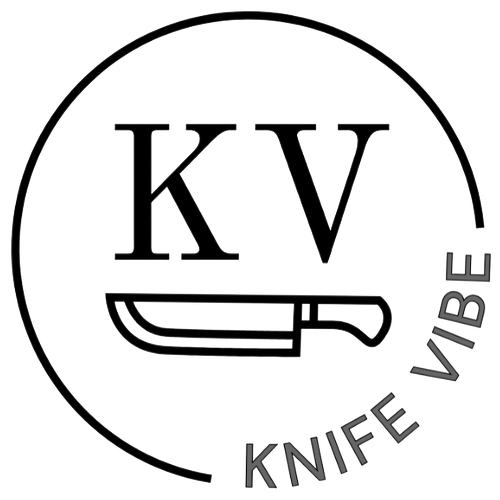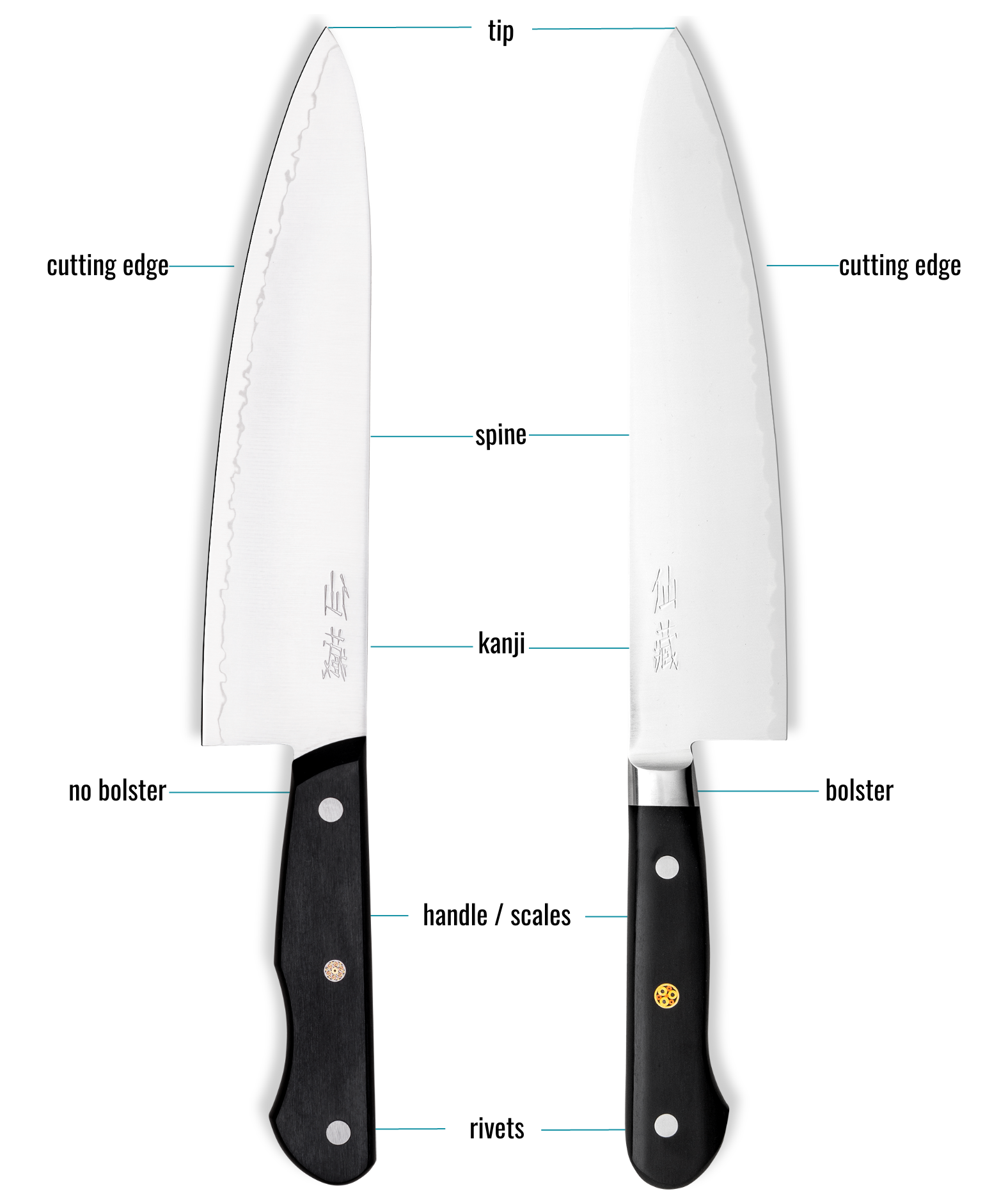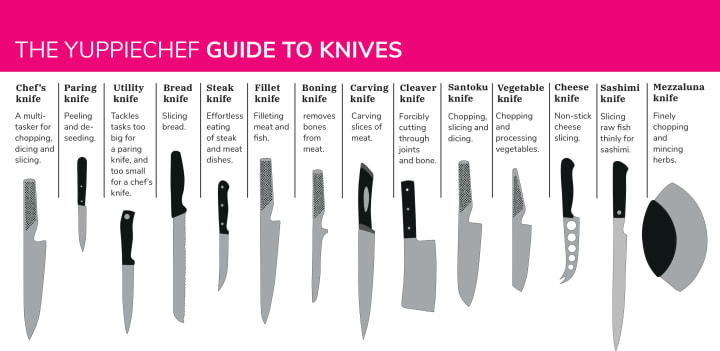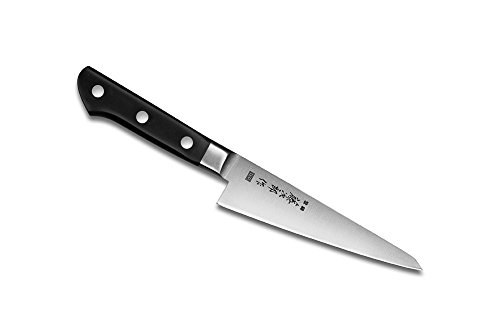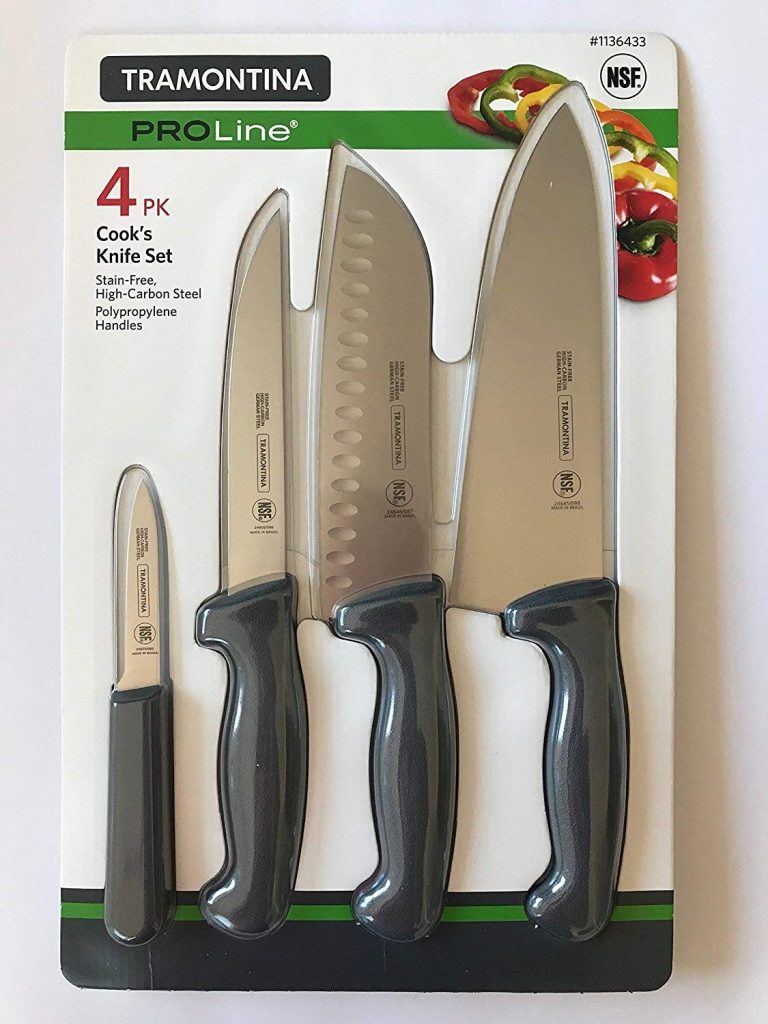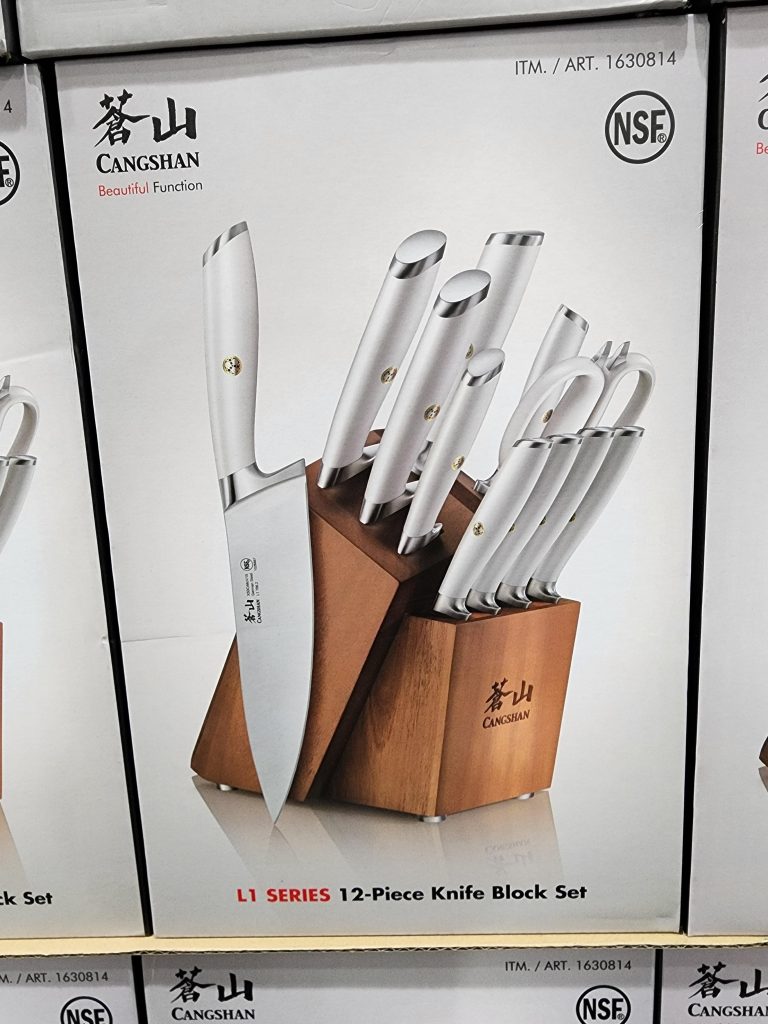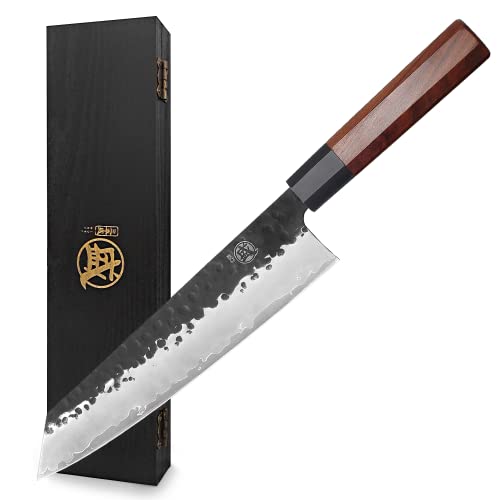Japanese Vs Western Knife: Which Blade Reigns Supreme?
Knives are essential tools in any kitchen. Two popular types are Japanese and Western knives.
Choosing the right knife can enhance your cooking experience. Japanese and Western knives have unique qualities and uses. Understanding these differences helps you make an informed decision. Japanese knives are known for their sharpness and precision. They are often lighter and thinner.
Western knives are typically heavier and more robust. They are versatile and durable. Comparing these two types of knives can guide you to the best choice for your needs. In this blog, we will explore the key differences between Japanese and Western knives. This will help you understand which one suits your cooking style and preferences.
Introduction To Japanese And Western Knives
Knives are essential tools in any kitchen. Their design and function vary across cultures. Two popular styles are Japanese and Western knives. Each has unique features and uses. This section explores their origins and cultural significance.
Historical Background
Japanese knives have a rich history. They trace back to the samurai era. Artisans crafted them with precision. They used traditional techniques and high-quality steel.
Western knives evolved differently. They originated in Europe. Blacksmiths created them to meet various culinary needs. They often used softer steel, making them easier to sharpen.
Cultural Significance
In Japan, knives are more than tools. They hold cultural value. Chefs treat them with respect. They believe a well-crafted knife is essential for preparing food.
Western knives also have cultural importance. They symbolize practicality and versatility. They suit a wide range of cooking styles. They reflect the diverse culinary traditions of the West.
| Aspect | Japanese Knives | Western Knives |
|---|---|---|
| Origin | Japan | Europe |
| Steel Type | High-quality, hard steel | Softer steel |
| Craftsmanship | Traditional techniques | Practical design |
| Cultural Value | Highly respected | Practical and versatile |
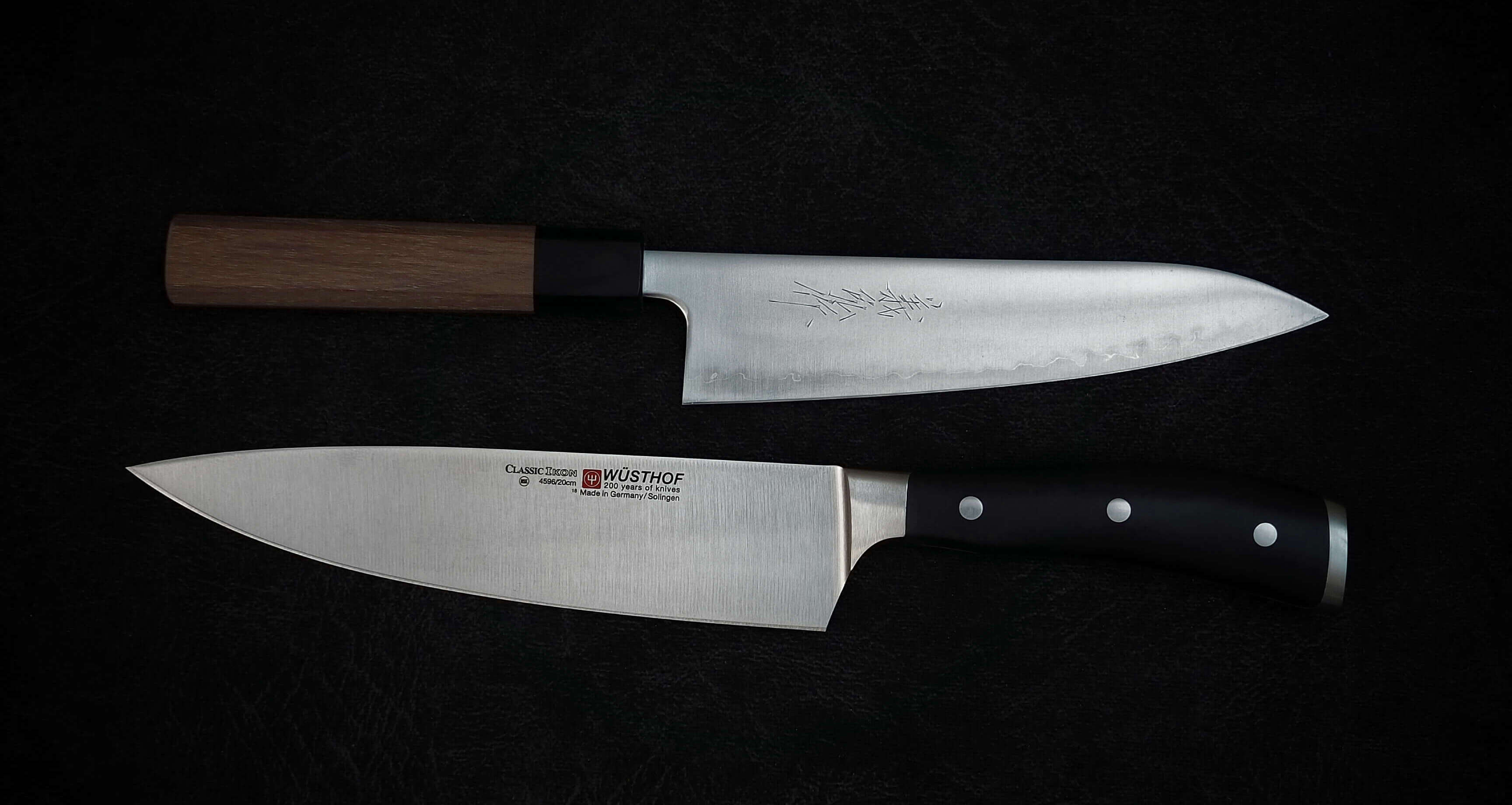
Credit: zahocho.com
Blade Materials And Craftsmanship
Choosing the right knife can significantly impact your cooking experience. Understanding the blade materials and craftsmanship behind Japanese and Western knives helps you make an informed choice. This section delves into the materials and techniques that define these two styles.
Steel Types
Japanese and Western knives use different types of steel. Japanese knives often feature high-carbon steel. This material provides a sharper edge. It requires more maintenance to prevent rust.
Western knives commonly use stainless steel. It’s more resistant to rust and easier to maintain. The trade-off is that it may not hold a sharp edge as long.
| Japanese Knives | Western Knives |
|---|---|
| High-carbon steel | Stainless steel |
| Holds a sharper edge | More rust-resistant |
| Requires more maintenance | Easier to maintain |
Crafting Techniques
The craftsmanship of Japanese knives is rooted in tradition. Many are made using techniques passed down through generations. One popular method is the Honyaki technique. It involves forging the blade from a single piece of steel. This results in a very hard and sharp blade.
Western knives often use modern manufacturing processes. Many are made with the stamping method. This involves cutting the blade shape from a large sheet of steel. The blade is then tempered and sharpened.
- Japanese knives use traditional techniques like Honyaki.
- Western knives often use stamping methods.
In summary, Japanese knives are crafted with precision and tradition. Western knives focus on durability and ease of maintenance. Each style has its unique benefits based on your cooking needs.
Design And Aesthetics
Design and aesthetics play a crucial role in distinguishing Japanese knives from Western knives. Each style has unique features that reflect its cultural heritage and functional purpose. These features can be seen in the blade shapes and handle designs.
Blade Shapes
Japanese knives typically have thinner, sharper blades. They are designed for precision. The blade often has a single bevel, which means it’s sharpened on one side only. This allows for cleaner cuts. Western knives, on the other hand, usually have thicker, more robust blades. They are double-beveled, meaning sharpened on both sides. This design makes them versatile and durable. The blade shapes in Western knives are often broader, providing more strength for tougher tasks.
Handle Designs
Japanese knife handles are often made from wood. They have a straight, cylindrical shape. This design offers a comfortable grip and better control. The handle is usually lightweight, balancing the knife’s overall weight. Western knife handles, in contrast, are typically made from synthetic materials or heavy woods. They have an ergonomic design, contoured to fit the hand. This provides a firm, secure grip, which is ideal for heavy-duty cutting. The full tang construction, where the blade extends through the handle, offers additional strength and balance.
Performance And Functionality
Choosing between Japanese and Western knives involves understanding their performance and functionality. Both types excel in different areas. Knowing these differences can help you make an informed decision.
Cutting Techniques
Japanese knives are known for their precision. They are ideal for delicate slicing and intricate cuts. The blade is thinner, allowing for more control and accuracy. Chefs often use them for sushi and sashimi.
Western knives are versatile. They can handle heavier tasks like chopping through bones and tough vegetables. The blade is thicker and more robust, making it suitable for various cooking styles.
Edge Retention
The edge retention of a knife refers to how long it stays sharp. Japanese knives often have harder steel. This means they stay sharper longer. They require less frequent sharpening but need careful handling to avoid chipping.
Western knives usually have softer steel. They are easier to sharpen but lose their edge faster. This can be an advantage if you prefer regular maintenance over careful handling.
| Feature | Japanese Knives | Western Knives |
|---|---|---|
| Blade Thickness | Thinner | Thicker |
| Precision | High | Moderate |
| Edge Retention | Longer | Shorter |
| Ease of Sharpening | Less frequent | More frequent |
Understanding these features helps you pick the right tool for your kitchen needs. Whether you value precision or versatility, there’s a knife that fits your style.
Maintenance And Durability
When comparing Japanese and Western knives, maintenance and durability are critical factors. These elements significantly influence a knife’s performance and lifespan. Proper maintenance ensures a knife stays sharp and effective. Durability determines how long a knife will serve you well. Let’s explore the key aspects of maintenance and durability for both Japanese and Western knives.
Sharpening Methods
Japanese knives often require more frequent sharpening. Their blades are usually thinner and made from harder steel. This makes them prone to chipping if not handled carefully. Traditional whetstones are commonly used to sharpen Japanese knives. This method requires skill and patience but provides a very sharp edge.
Western knives typically have thicker, softer blades. They are more forgiving and can handle more robust tasks. Many people use honing rods or mechanical sharpeners for Western knives. These tools make sharpening quicker and easier. The softer steel means they need sharpening less often than Japanese knives.
Longevity
Japanese knives, with proper care, can last a lifetime. Their harder steel holds an edge longer but requires careful maintenance. Avoid cutting hard materials to prevent chipping. Regular sharpening with a whetstone will keep them in top condition.
Western knives are built for durability. The softer steel resists chipping and can withstand rougher use. They may not hold an edge as long but are easier to maintain. With proper care, Western knives also offer long-term reliability. Their robust construction allows them to handle a variety of kitchen tasks without significant wear.

Credit: www.knivesfromjapan.co.uk
Cost And Accessibility
When choosing between Japanese and Western knives, cost and accessibility play a significant role. Both types of knives offer unique qualities, but their price and availability can vary greatly. Understanding these differences helps in making an informed decision.
Price Range
Japanese knives often come with a higher price tag. Skilled craftsmanship and premium materials contribute to the cost. Prices can range from $100 to several hundred dollars.
Western knives are generally more affordable. They often use mass production methods, which helps lower costs. Prices typically range from $20 to $150, making them accessible to a wider audience.
Market Availability
Japanese knives can be harder to find in local stores. Specialty shops and online retailers usually carry a wider selection. This can limit immediate accessibility but offers a diverse range of options.
Western knives are widely available in most kitchenware stores. Their presence in big-box retailers makes them easy to find. This convenience appeals to many home cooks and professionals alike.
Popular Knife Brands
Choosing the right knife brand can be overwhelming. Different brands offer unique qualities and designs. This section explores popular Japanese and Western knife brands. Each brand has its strengths and appeal.
Japanese Brands
Japanese knives are famous for their precision and sharpness. Here are some top brands:
- Shun: Known for high-quality craftsmanship. Shun knives are sharp and durable.
- Global: Lightweight and well-balanced. Global knives have a unique design.
- Masamoto: A favorite among chefs. Masamoto offers traditional and reliable knives.
- MAC: Famous for their ultra-sharp blades. MAC knives are also easy to maintain.
- Miyabi: Blends traditional and modern techniques. Miyabi knives are both beautiful and functional.
Western Brands
Western knives are known for their robustness and versatility. Here are some leading brands:
- Wüsthof: German brand known for its durability. Wüsthof knives are perfect for heavy-duty tasks.
- Henckels: Offers a wide range of knives. Henckels is popular for its reliability and quality.
- Victorinox: Swiss brand famous for its affordability. Victorinox knives are versatile and practical.
- Zwilling: Known for its innovative designs. Zwilling knives combine tradition and technology.
- Chef’sChoice: Offers high-quality knives and sharpeners. Chef’sChoice products are user-friendly.
| Japanese Brands | Western Brands |
|---|---|
| Shun | Wüsthof |
| Global | Henckels |
| Masamoto | Victorinox |
| MAC | Zwilling |
| Miyabi | Chef’sChoice |
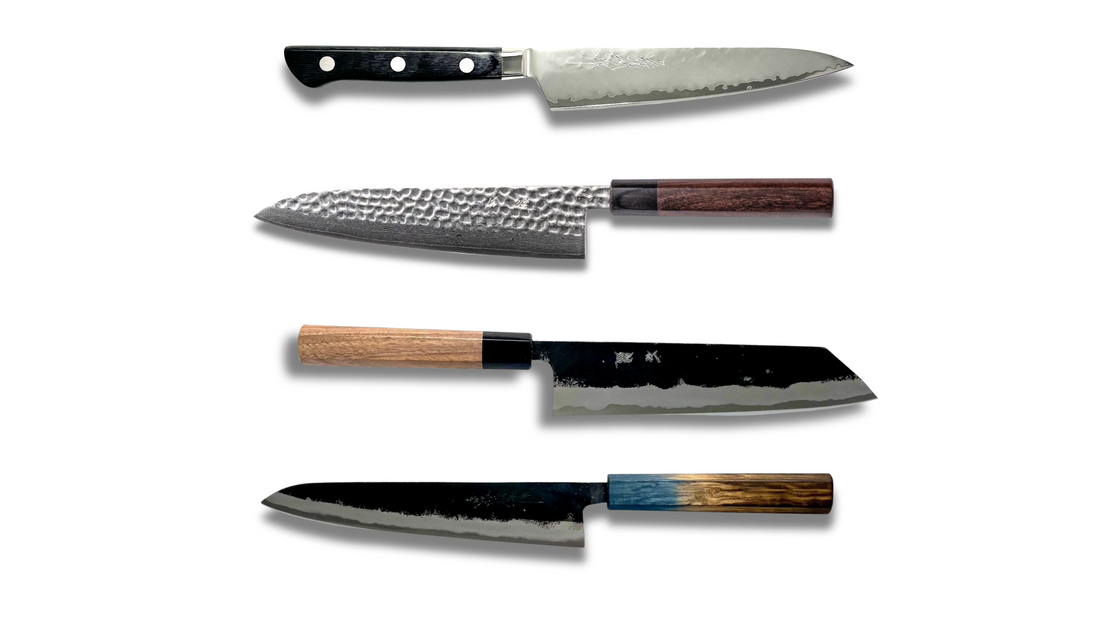
Credit: omakase-forest.com
Choosing The Right Knife
Choosing the right knife can be a challenging task. There are many types to consider. Japanese and Western knives are popular choices. Each type has its strengths. Your choice depends on your needs and preferences.
Cooking Needs
Your cooking style matters. Japanese knives are great for precise cuts. They are lightweight and sharp. Ideal for slicing fish and vegetables. Western knives are versatile. They handle tougher tasks. Chopping, dicing, and cutting through bones.
| Japanese Knives | Western Knives |
|---|---|
| Lightweight | Sturdy |
| Sharp edges | Durable |
| Precision cutting | Versatile |
Think about what you cook often. Do you need thin, precise cuts? Or do you need a knife for heavy-duty tasks? Your cooking needs will guide your choice.
Personal Preference
Your comfort is important. Japanese knives have a different feel. They are lighter and have a unique balance. Western knives are heavier. They offer a solid grip. Think about what feels better in your hand. Try holding both types. See which one feels right.
Consider the maintenance. Japanese knives need more care. They have a sharper edge but can chip. Western knives are easier to maintain. They are more forgiving. Choose a knife that fits your lifestyle.
Budget is another factor. Japanese knives can be more expensive. They are often hand-crafted. Western knives have a wide price range. There are good options for every budget.
So, consider your needs and preferences. Think about your cooking style, comfort, and budget. This will help you choose the right knife.
Frequently Asked Questions
What Are The Main Differences Between Japanese And Western Knives?
Japanese knives are lighter and sharper with a single bevel edge. Western knives are heavier, more durable, and have a double bevel edge.
Which Knife Is Better For Precision Cutting?
Japanese knives are better for precision cutting due to their sharper, thinner blades and single bevel edge.
Are Japanese Knives Harder To Maintain?
Yes, Japanese knives require more maintenance. They are made from harder steel, which can chip easily and needs frequent sharpening.
What Are Western Knives Best Used For?
Western knives are best for heavy-duty tasks like chopping through bones, tough vegetables, and dense meats.
Conclusion
Choosing between Japanese and Western knives depends on your cooking style. Japanese knives offer precision and sharpness. Western knives provide durability and versatility. Both have unique strengths. Consider your needs and preferences. Test both if possible. This helps you make the best choice.
Quality and craftsmanship matter in both types. Invest in a knife that feels right for you. Happy cooking!
